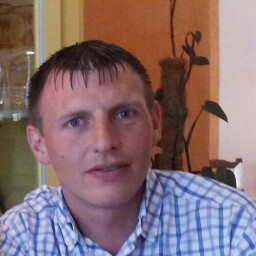Michael L Hutton
age ~72
from Lodi, CA
- Also known as:
-
- Mike L Hutton
- Hutton Hutton
- Phone and address:
-
2 S Ham Ln, Lodi, CA 95242
2093295600
Michael Hutton Phones & Addresses
- 2 S Ham Ln, Lodi, CA 95242 • 2093295600
- 1133 Orange Ave, Lodi, CA 95240
- San Jose, CA
Lawyers & Attorneys

Michael Edward Hutton - Lawyer
view sourceLicenses:
New York - Currently registered 2013
Education:
Syracuse University College of Law
Name / Title
Company / Classification
Phones & Addresses
Realty World California Homes
Real Estate · Single-Family House Construction
Real Estate · Single-Family House Construction
151 Bernal Rd SUITE 2B, San Jose, CA 95119
4082818383
4082818383
Resumes

Platoon Sergeant
view sourceWork:
United States Marine Corps
Platoon Sergeant
Platoon Sergeant

Michael Hutton
view source
Michael Hutton
view source
Michael Hutton
view source
Michael Hutton
view source
Michael Hutton
view sourceLocation:
United States
Medicine Doctors

Michael J. Hutton
view sourceSpecialties:
Optometry
Work:
Greater Vision Eye Associates
19 W 3 St, Lewistown, PA 17044
7172485678 (phone), 7172422716 (fax)
19 W 3 St, Lewistown, PA 17044
7172485678 (phone), 7172422716 (fax)
Languages:
English
Description:
Dr. Hutton works in Lewistown, PA and specializes in Optometry.
Us Patents
-
Interconnection And Input/Output Resources For Programmable Logic Integrated Circuit Devices
view source -
US Patent:6407576, Jun 18, 2002
-
Filed:Mar 2, 2000
-
Appl. No.:09/516921
-
Inventors:Tony Ngai - Campbell CA
Bruce Pedersen - San Jose CA
James Schleicher - Santa Clara CA
Wei-Jen Huang - Burlingame CA
Michael Hutton - Palo Alto CA
Victor Maruri - Mountain View CA
Rakesh Patel - Cupertino CA
Peter J. Kazarian - Cupertino CA
Andrew Leaver - Palo Alto CA
David W. Mendel - Sunnyvale CA
Jim Park - San Jose CA -
Assignee:Altera Corporation - San Jose CA
-
International Classification:H01L 2500
-
US Classification:326 41, 326 39, 326 47
-
Abstract:A programmable logic integrated circuit device has a plurality of regions of programmable logic disposed on the device in a plurality of intersecting rows and columns of such regions. Interconnection resources (e. g. , interconnection conductors, signal buffers/drivers, programmable connectors, etc. ) are provided on the device for making programmable interconnections to, from, and/or between the regions. At least some of these interconnection resources are provided in two forms that are architecturally similar (e. g. , with similar and substantially parallel routing) but that have significantly different signal propagation speed characteristics. For example, a major or larger portion of such dual-form interconnection resources may have what may be termed normal signal speed, while a smaller minor portion may have significantly faster signal speed. Secondary (e. g. , clock and clear) signal distribution may also be enhanced, and so may be input/output circuitry and cascade connections between adjacent or nearby logic modules on the device.
-
Programmable Logic Device Routing Architecture To Facilitate Register Re-Timing
view source -
US Patent:6429681, Aug 6, 2002
-
Filed:Feb 9, 2001
-
Appl. No.:09/781056
-
Inventors:Michael D. Hutton - Mountain View CA
-
Assignee:Altera Corporation - San Jose CA
-
International Classification:H03K 19177
-
US Classification:326 41, 326 38
-
Abstract:A programmable logic device has registers (âre-timing registersâ) associated with interconnection conductors. The re-timing registers are in addition to registers that are conventionally associated with other device elements such as logic and memory cells. Programmable links enable optional data paths through the re-timing registers between disconnected segments of interconnection conductors. Re-timing techniques for optimization of circuit designs seeking to minimize the longest register-to-register path can include positioning of re-timing registers on interconnection conductors. Long interconnection conductors can be used in data paths between device elements with only short segments of interconnection conductors contributing to critical path lengths.
-
Programmable Logic Devices With Bidirect Ional Cascades
view source -
US Patent:6747480, Jun 8, 2004
-
Filed:Jul 12, 2002
-
Appl. No.:10/195209
-
Inventors:Sinan Kaptanoglu - Belmont CA
Michael D. Hutton - Mountain View CA
James Schleicher - Santa Clara CA -
Assignee:Altera Corporation - San Jose CA
-
International Classification:H03K 19177
-
US Classification:326 41, 326 47
-
Abstract:A programmable logic integrated circuit device has a plurality of regions of programmable logic disposed on the device in a plurality of intersecting rows and columns of such regions. The regions of logic may include logic subregions that each have a look-up table. Interconnection resources (e. g. , inter-region and intra-region interconnection conductors, signal buffers and drivers, programmable connectors, etc. ) are provided on the device for making programmable interconnections between the look-up tables. Programmable bidirectional cascade circuitry that is distinct from the interconnections may be used to make connections directly from the output of one look-up table to another without using the interconnection resources. The programmable cascade circuitry may be programmed so that multiple look-up tables are interconnected to form sequential cascade chains or cascade trees.
-
Interconnection And Input/Output Resources For Programmable Logic Integrated Circuit Devices
view source -
US Patent:6894533, May 17, 2005
-
Filed:Jun 9, 2003
-
Appl. No.:10/458431
-
Inventors:Tony Ngai - Campbell CA, US
Bruce Pedersen - San Jose CA, US
James Schleicher - Santa Clara CA, US
Wei-Jen Huang - Burlingame CA, US
Michael Hutton - Palo Alto CA, US
Victor Maruri - Mountain View CA, US
Rakesh Patel - Cupertino CA, US
Peter J. Kazarian - Cupertino CA, US
Andrew Leaver - Palo Alto CA, US
David W. Mendel - Sunnyvale CA, US
Jim Park - San Jose CA, US -
Assignee:Altera Corporation - San Jose CA
-
International Classification:H03K019/177
-
US Classification:326 41, 326 39, 326 40
-
Abstract:A programmable logic integrated circuit device has a plurality of regions of programmable logic disposed on the device in a plurality of intersecting rows and columns of such regions. Interconnection resources (e. g. , interconnection conductors, signal buffers/drivers, programmable connectors, etc. ) are provided on the device for making programmable interconnections to, from, and/or between the regions. At least some of these interconnection resources are provided in two forms that are architecturally similar (e. g. , with similar and substantially parallel routing) but that have significantly different signal propagation speed characteristics. For example, a major or larger portion of such dual-form interconnection resources may have what may be termed normal signal speed, while a smaller minor portion may have significantly faster signal speed. Secondary (e. g. , clock and clear) signal distribution may also be enhanced, and so may be input/output circuitry and cascade connections between adjacent or nearby logic modules on the device.
-
Time-Multiplexed Routing In A Programmable Logic Device Architecture
view source -
US Patent:6977520, Dec 20, 2005
-
Filed:Aug 13, 2002
-
Appl. No.:10/219085
-
Inventors:Michael D. Hutton - Mountain View CA, US
Richard G. Cliff - Los Altos CA, US -
Assignee:Altera Corporation - San Jose CA
-
International Classification:H03K019/173
-
US Classification:326 38, 326 46
-
Abstract:Programmable logic device interconnection resources include bus wires. A bus wire provides a programmable signal path across the programmable logic device from several logic device outputs to several other logic device inputs. Serializing circuitry multiplexes multiple device output signals and drives time-multiplexed data signals on the bus wires. Bus registers placed at the ends of bus wires register or buffer the data signals transmitted over the bus wires. The registered signals are passed on to deserializing circuitry for demultiplexing data signals to provide parallel device input signals. The bus registers, and the serializing/deserializing circuitry are clocked at a rate faster than the device system clock to schedule the use of the bus wires for transmission of multiple device input/output signals over the bus wires within a system clock cycle.
-
Interconnection And Input/Output Resources For Programmable Logic Integrated Circuit Devices
view source -
US Patent:6989689, Jan 24, 2006
-
Filed:May 24, 2004
-
Appl. No.:10/852858
-
Inventors:Tony Ngai - Campbell CA, US
Bruce Pedersen - San Jose CA, US
James Schleicher - Santa Clara CA, US
Wei-Jen Huang - Burlingame CA, US
Michael Hutton - Palo Alto CA, US
Victor Maruri - Mountain View CA, US
Rakesh Patel - Cupertino CA, US
Peter J. Kazarian - Cupertino CA, US
Andrew Leaver - Palo Alto CA, US
David W. Mendel - Sunnyvale CA, US
Jim Park - San Jose CA, US -
Assignee:Altera Corporation - San Jose CA
-
International Classification:H03K 19/177
-
US Classification:326 41, 326 39, 326 47
-
Abstract:A programmable logic integrated circuit device has a plurality of regions of programmable logic disposed on the device in a plurality of intersecting rows and columns of such regions. Interconnection resources (e. g. , interconnection conductors, signal buffers/drivers, programmable connectors, etc. ) are provided on the device for making programmable interconnections to, from, and/or between the regions. At least some of these interconnection resources are provided in two forms that are architecturally similar (e. g. , with similar and substantially parallel routing) but that have significantly different signal propagation speed characteristics. For example, a major or larger portion of such dual-form interconnection resources may have what may be termed normal signal speed, while a smaller minor portion may have significantly faster signal speed. Secondary (e. g. , clock and clear) signal distribution may also be enhanced, and so may be input/output circuitry and cascade connections between adjacent or nearby logic modules on the device.
-
Shared Lookup Table Enhancements For The Efficient Implementation Of Barrel Shifters
view source -
US Patent:7010777, Mar 7, 2006
-
Filed:Mar 22, 2004
-
Appl. No.:10/807360
-
Inventors:Michael Hutton - Mountain View CA, US
Andy L. Lee - San Jose CA, US
Rahul Saini - Union City CA, US -
Assignee:Altera Corporation - San Jose CA
-
International Classification:G06F 17/50
-
US Classification:716 19, 716 12, 716 16, 716 17, 326 41
-
Abstract:Additional circuitry is provided over a shared-LUT logic circuit to allow functions of different input characteristics to share a logic element which was conventionally illegal. More restrictive circuitry may be provided over a shared-LUT logic circuit to allow functions with particular input characteristics.
-
Techniques For Using Edge Masks To Perform Timing Analysis
view source -
US Patent:7093219, Aug 15, 2006
-
Filed:Nov 20, 2003
-
Appl. No.:10/718978
-
Inventors:Michael D. Hutton - Mountain View CA, US
-
Assignee:Altera Corporation - San Jose CA
-
International Classification:G06F 17/50
-
US Classification:716 6
-
Abstract:Techniques are provided for more efficient timing analysis of user designs for programmable ICs. Initially, a graph is created that represents nodes and edges in a user design. Each edge in the graph is assigned a binary edge mask, each bit of which indicates whether it is reachable from a source or destination type relevant to user specified timing constraints. A timing analysis tool then performs multiple depth-first search operations to compute delays along time critical paths relevant to the user specified timing constraints. Because each edge contains an edge mask to indicate whether it connects to a particular source or destination point, the timing analysis tool does not analyze areas of the graph that do not lead to a relevant source or destination point. These techniques prevent the timing analysis tool from analyzing paths in the graph that are not relevant to the analysis of the time critical paths.
News

POLITICO Playbook: Breaking down the GOP's midterm momentum - POLITICO
view source- remony was officiated by House Chaplain Margaret Kibben. Pic Another pic SPOTTED: Rep. Haley Stevens, Rep. JanSchakowsky and Bob Creamer, Alex Hoehn-Saric, Robert Marcus, Tiffany Guarascio, James Adams, Matt Corridoni, Paul Gage, Kelly Nickel, Ned Michalek, Michael Hutton and Lyndon Boozer.
- Date: Oct 19, 2022
- Category: U.S.
- Source: Google

After 190 Tries, Are We Any Closer to a Cure for Alzheimer's?
view source- Despite the cautious optimism, Michael Hutton, a distinguished medical fellow at Eli Lilly, conjures a nightmare scenario in which money for research and development on Alzheimers dries up if the latest amyloid drug trials report lackluster results next year. If that happens, I do suspect well
- Date: Jun 27, 2016
- Category: Health
- Source: Google

Lilly Takes Alzheimer's Research Down New Path
view source- Lilly, which said it hasnt discussed its anti-tau program outside of scientific circles previously, began looking at tau in 2006. In 2009, the company hired Michael Hutton, a tau specialist from the Mayo Clinic, to bolster its efforts. Within the next two years, the company expects to begin testing
- Date: Apr 17, 2013
- Category: Health
- Source: Google

Medtronic, Eli Lilly collaborate on Parkinson's
view source- "By collaborating with Medtronic from the earliest phase of research, we are maximizing the potential for this therapy's efficient and effective development," said Michael Hutton, Lilly's chief scientist for neurodegeneration.
- Date: Apr 27, 2011
- Category: Health
- Source: Google

Teaming Up to Develop Cutting Edge Parkinsons Therapy
view source- We believe we have biosynthetically engineered this GDNF variant to overcome technical hurdles of previous research in this area and are hopeful that early testing of our biologic with Medtronics device will provide the necessary data to safely advance into human studies, said Michael Hutton, chie
- Date: Apr 27, 2011
- Category: Health
- Source: Google

Michael Krey Hutton
view source
Michael Shannon Hutton
view source
Michael S. Hutton
view source
Michael John Hutton
view source
Michael Brandon Hutton
view source
Michael James Hutton
view source
Michael John Hutton
view source
Michael John Hutton
view sourceYoutube
Plaxo

Michael Hutton
view source
Michael Hutton
view sourceFloridaGEAR Software.com
Classmates

Michael Hutton
view sourceSchools:
Rhea County High School Evensville TN 2003-2007
Community:
Sheryl Rockholt

Michael Hutton
view sourceSchools:
Rim of the World High School Lake Arrowhead CA 1999-2003
Community:
Floyd Farrar, Karan Spencer

Michael Hutton
view sourceSchools:
White's Adult High School Sevierville TN 1993-1996
Community:
Brittany Mckinley, Linda Floyd, Patricia Ball, Edward Anderson, Christine Hurst

Michael Hutton
view sourceSchools:
Towson High School Towson MD 2001-2005

Michael Hutton (Revess)
view sourceSchools:
Lamar County High School Barnesville GA 1996-2000
Community:
Joe Davis, Tommy Batchelor, Sandy Taylor

Michael Hutton
view sourceSchools:
Alexander Henry High School Sault Ste. Marie Morocco 1984-1988
Community:
Jacques Roussel, Ralph Barber, Bobbie Paquette

Michael Hutton
view sourceSchools:
Murray Elementary School Chanute KS 1974-1981
Community:
Jim Gilbreath

Michael Hutton
view sourceSchools:
John F. Kenney High School New York NY 1976-1980
Myspace
Flickr
Googleplus

Michael Hutton
Education:
Boston University - MBA, University of Massachusetts Lowell - Health Services/Accounting, University of Massachusetts Lowell - Information Technology

Michael Hutton
Work:
University (10)
Education:
Bradford University - I.T. Business

Michael Hutton
Work:
Foote, Cone & Belding - Senior Art Director

Michael Hutton
Education:
Nelson boys

Michael Hutton
Work:
MTF - Allograft Consultant (2002)

Michael Hutton
Work:
State of Missouri

Michael Hutton
Relationship:
In_a_relationship
About:
I like woodworking,painting,making telescopes and viewing the stars,planets galaxies and everything else that is out there. I enjoy designing, handcrafting and painting all kinds of country and cotta...

Michael Hutton
Tagline:
Extremisim in the defense of liberty is no vice.
Get Report for Michael L Hutton from Lodi, CA, age ~72



























